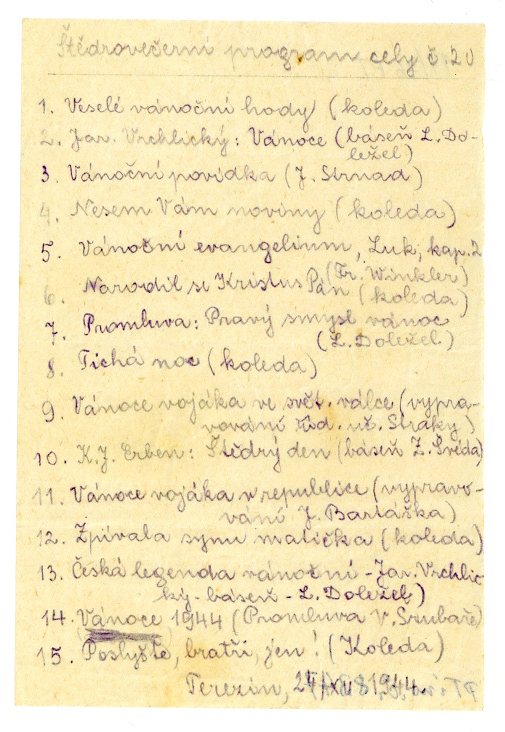
Jaroslav Bank
Jaroslav Bank was born at Olšany in the Šumperk district on March 5, 1921. During the Nazi occupation, he worked as an accountant and customs agent with the Grohmann company in Šumperk, an importer of fruit and vegetables. He was reportedly involved in anti-Nazi resistance as early as the summer of 1942. Later on, he joined the extensive North Moravian group called the National Association of Czechoslovak Patriots in the district of Olšany, based at Bludov. He was engaged in organizing underground activities; together with other members, he supported the families of people persecuted by the Nazis, and helped other resistance fighters escape arrest by the Gestapo. In the company where he was employed, Bank himself carried out railway sabotages, damaging wheels of railway carriages by dusting quartz filter sand or steel filings into their ball bearings. As needed, he obtained and delivered food, medicaments, and lighting devices to partisans hiding in forest bunkers. He also took part in training with firearms acquired for future armed clashes with the Germans. From February to April 1943, he was planning to blow up bridges, road blocks, and a railway track in the Olšany area. Bank also identified sections of the infrastructure suitable for damaging electric, telegraphic, and telephone links, and carried out several similar subversive operations. Early in 1944, the underground movement known as the National Association of Czechoslovak Patriots had been betrayed, and a wave of arrests followed. The process of gradually uncovering the North Moravian resistance network led the Gestapo to the trail of Jaroslav Bank and to his arrest on April 14, 1944. He was kept and interrogated in the Gestapo office agency in Šumperk. Sent to the Mírov Prison on May 10, 1944, he was then deported to the Police Prison in Terezín’s Small Fortress in June of the same year. While in Terezín, he was employed in what was known as the “skinning shop”, where rabbit fur was skinned. He also had a spell in the “Feldkommando”, and helped in carrying dead bodies to the Terezín Crematorium. He was assigned to live in several cells; in some of them, despite the appalling living conditions, the inmates passed their free time in clandestine debates and lectures, educating one another, and pursuing various similar activities. These educational events are exemplified by the program of a Christmas Eve gathering in cell No. 20 (PT 8347). Jaroslav Bank kept it as a souvenir, but decided to donate it to the Terezín Memorial in the 1970s. Jaroslav Bank left the Small Fortress at the end of 1944 to stand trial at the court in the Vratislav (Breslau) penitentiary. But no trial took place in Breslau, and Bank was transferred to Dresden. He spent almost three months there before being transported to the prison camp Königstein near Pirna. Jaroslav Bank lived to see his liberation in the camp on May 8, 1945. He returned home to Olšany on May 12. After the war, he worked in the local paper mills.

